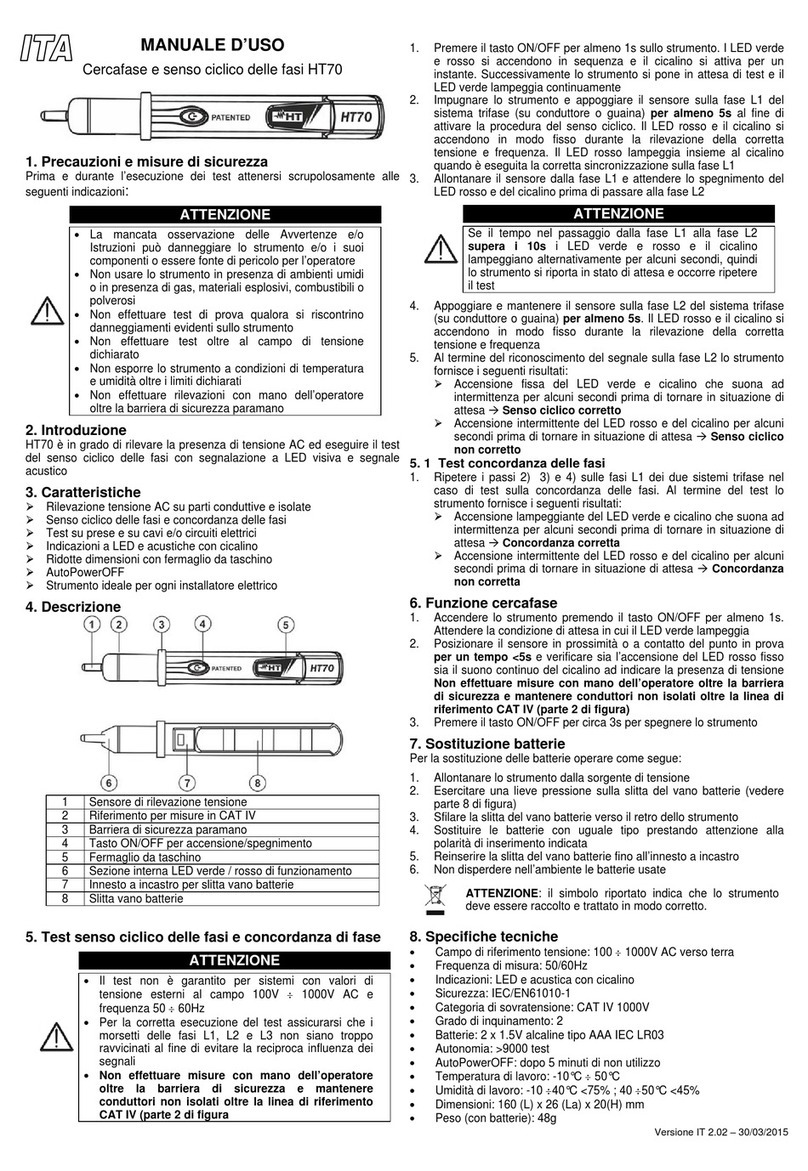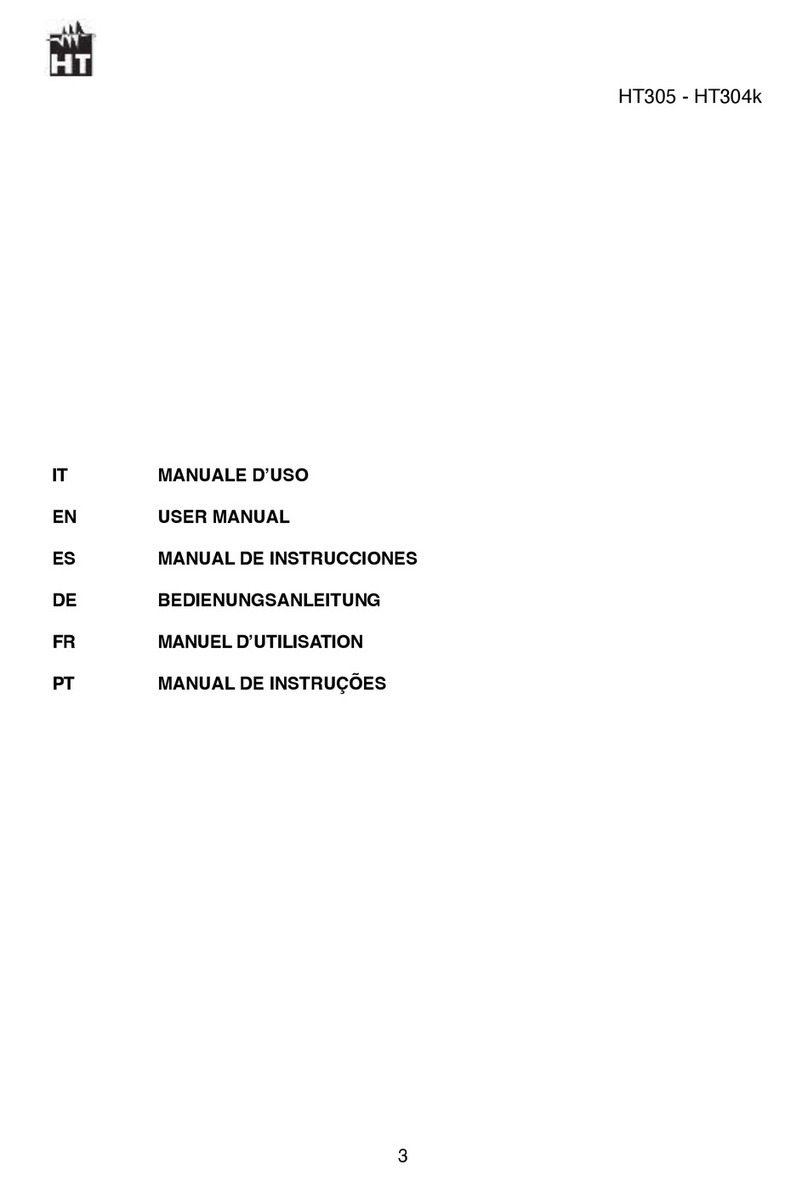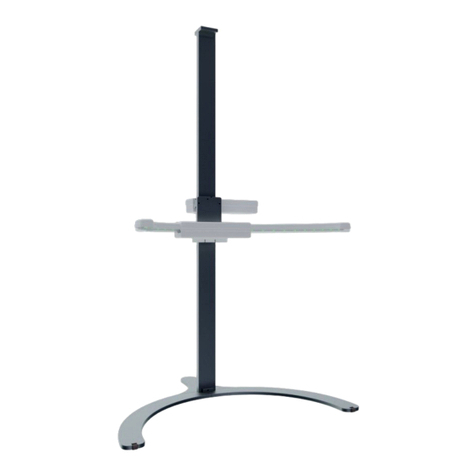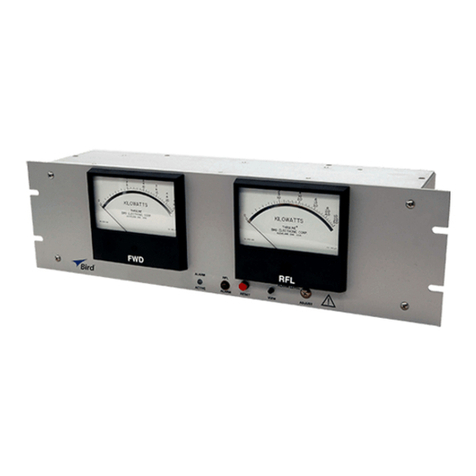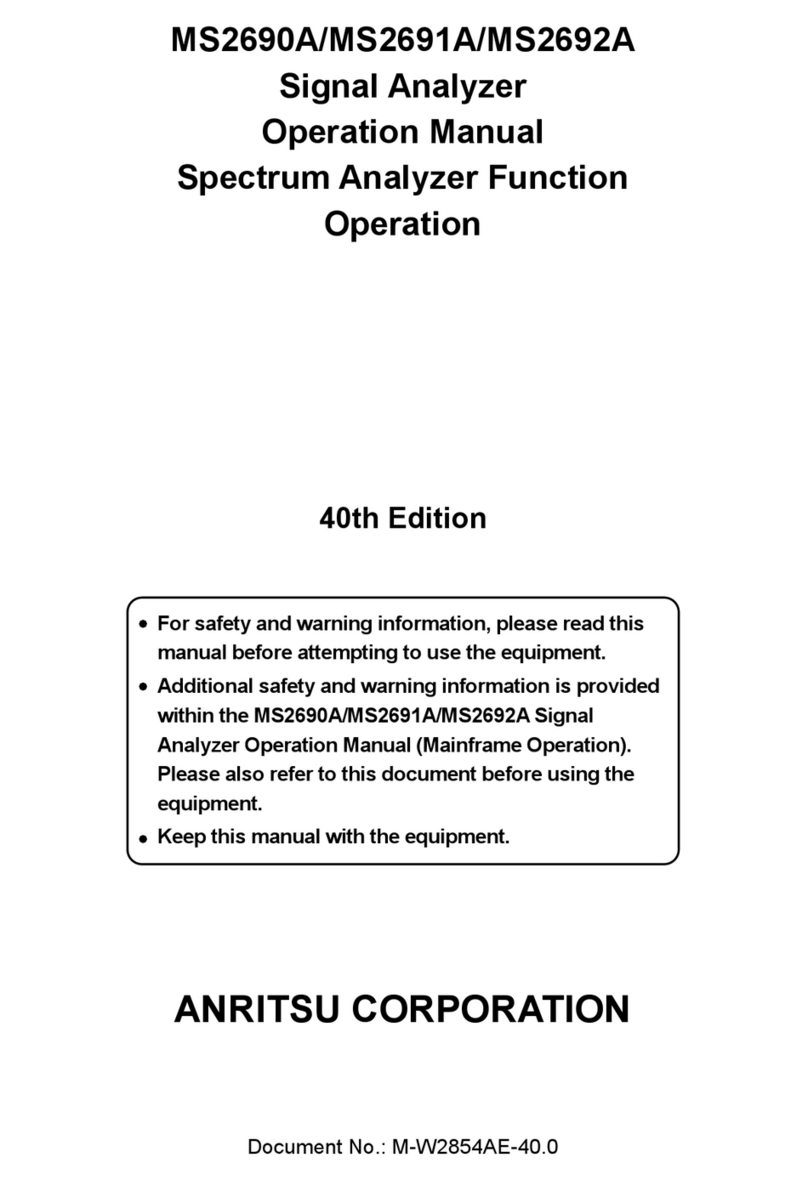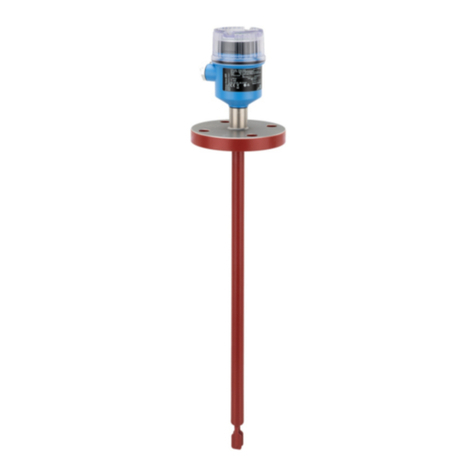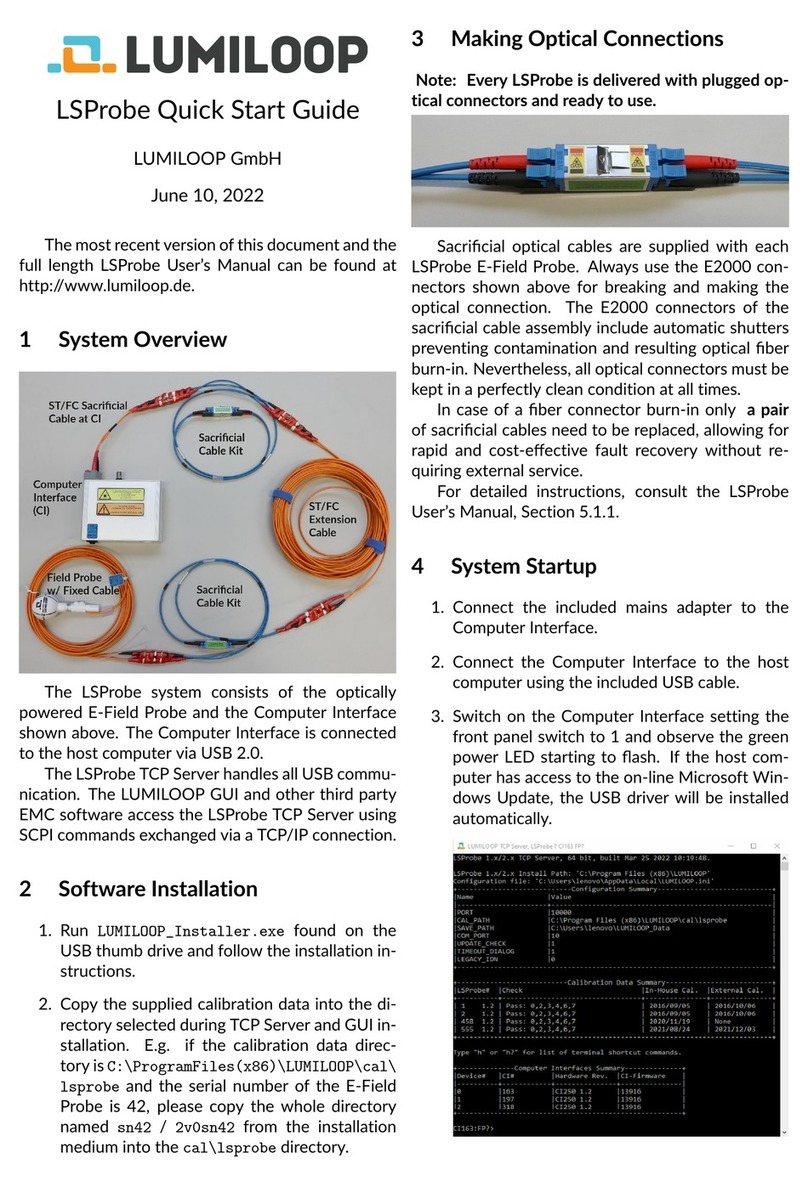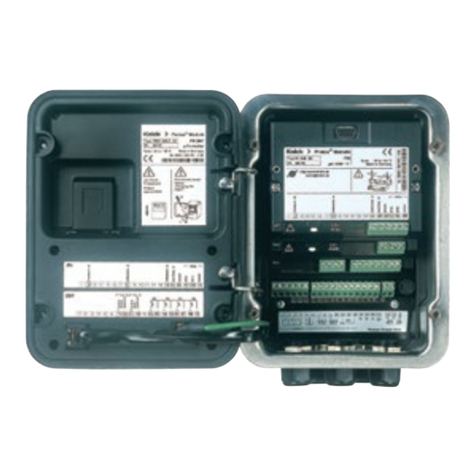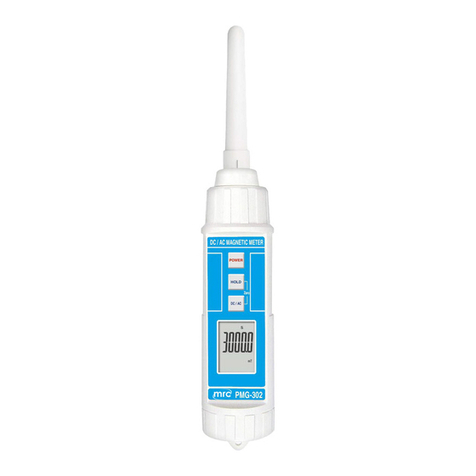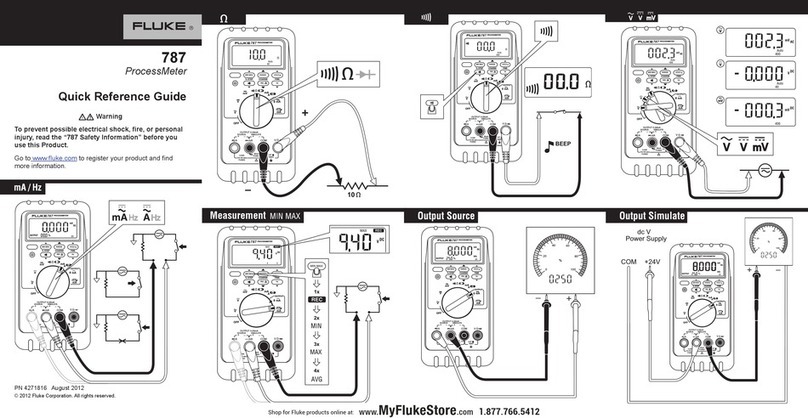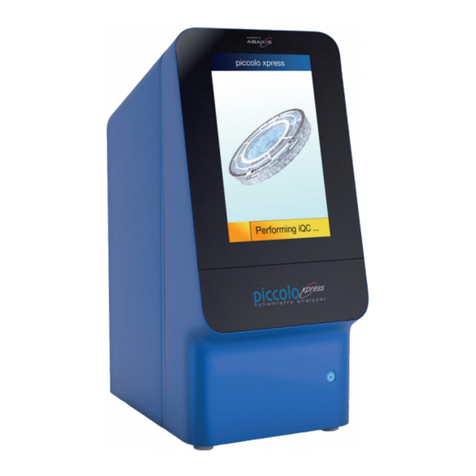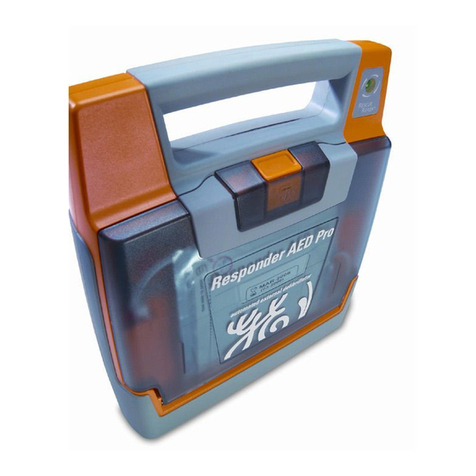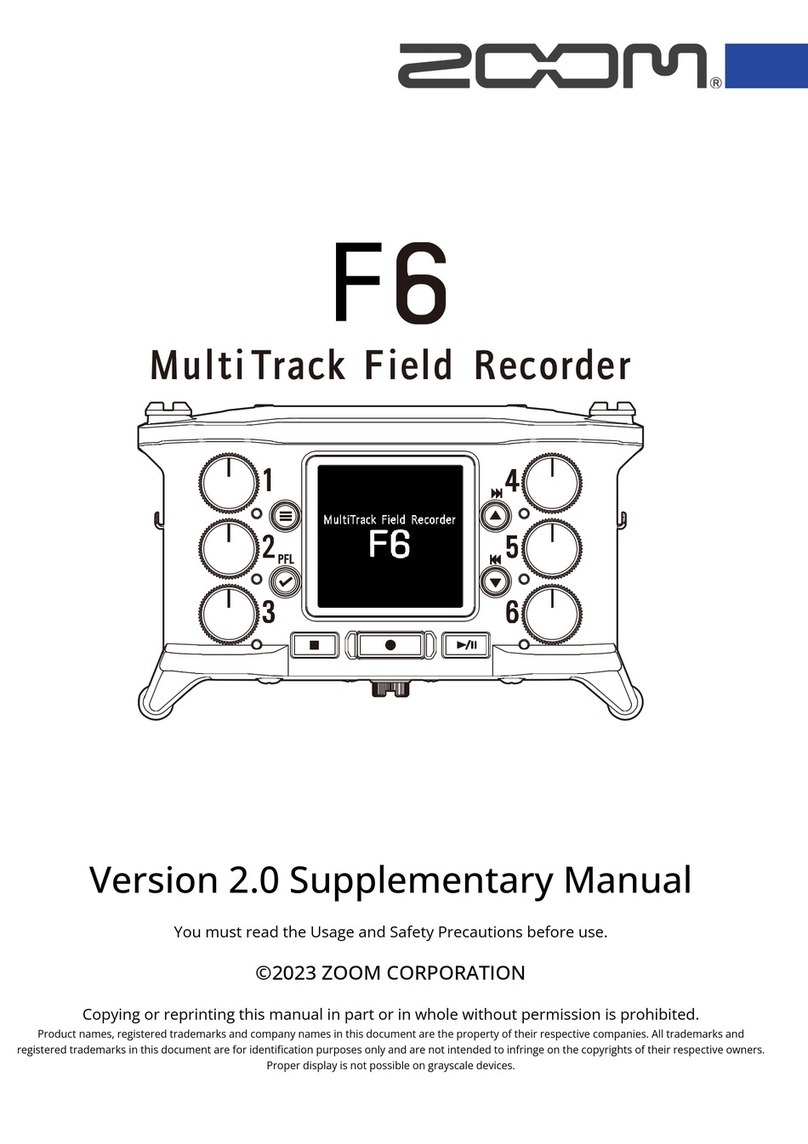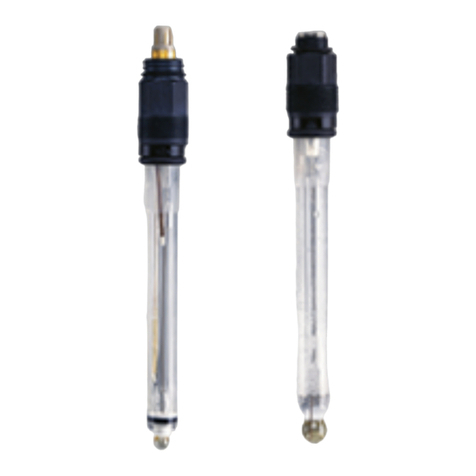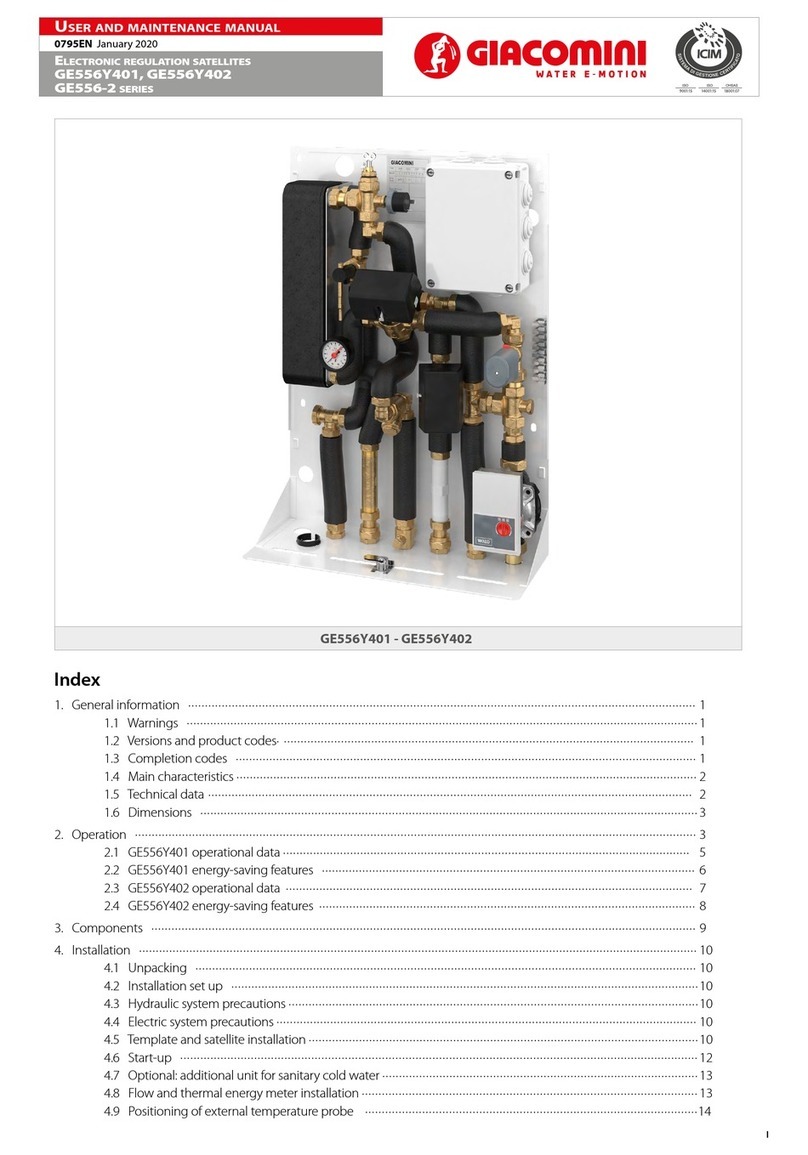HT Instruments HT304N User manual

Copyright HT ITALIA 2011 Release 1.00 - 27/07/2011
HT304N
Manuale d’uso
User’s guide
Manual de Instrucciones
Bedienungsanleitung


Indice generale
General index
Índice general
Inhalt
ITALIANO ......................... IT - 1
ENGLISH .........................EN - 1
ESPAÑOL........................SP - 1
DEUTSCH........................DE - 1


Copyright HT ITALIA 2011 Versione IT 1.00 - 27/07/2011
ITALIANO
Manuale d’uso

HT304
Indice
1. Precauzioni e misure di sicurezza................................................................................1
1.1. Istruzioni preliminari...............................................................................................1
1.2. Durante l’utilizzo....................................................................................................2
1.3. Dopo l’utilizzo ........................................................................................................2
2. Descrizione generale....................................................................................................2
2.1. Funzionalità dello strumento..................................................................................2
3. Preparazione all’utilizzo................................................................................................2
3.1. Controlli iniziali.......................................................................................................2
3.2. Taratura.................................................................................................................2
3.3. Immagazzinamento...............................................................................................2
4. Istruzioni operative .......................................................................................................3
4.1. Descrizione dello strumento ..................................................................................3
4.2. Istruzioni operative ................................................................................................3
5. Manutenzione...............................................................................................................4
5.1. Generalità..............................................................................................................4
5.2. Pulizia dello strumento ..........................................................................................4
5.3. Fine vita.................................................................................................................4
6. Specifiche tecniche.......................................................................................................4
6.1. Normative..............................................................................................................4
6.2. Caratteristiche generali..........................................................................................4
6.3. Ambiente ...............................................................................................................4
6.3.1. Condizioni ambientali di utilizzo.........................................................................4
6.3.2. Emc....................................................................................................................4
6.4. Accessori...............................................................................................................4
7. Assistenza....................................................................................................................5
7.1. Condizioni di garanzia ...........................................................................................5
7.2. Assistenza.............................................................................................................5

HT304
IT - 1
1. PRECAUZIONI E MISURE DI SICUREZZA
Lo strumento è stato progettato in conformità alla normativa EN61010-1 relative agli strumenti di misura
elettronici.
ATTENZIONE
Per la sicurezza dell'operatore e per evitare di danneggiare lo strumento, seguire le procedure
descritte nel presente manuale e leggere con particolare attenzione tutte le note precedute dal
simbolo .
Prima e durante l’esecuzione delle misure attenersi scrupolosamente alle seguenti indicazioni:
Non effettuare misure in presenza di gas o materiali esplosivi, combustibili o in ambienti polverosi.
Anche se non si stanno effettuando misure evitare contatti con il circuito in esame, con parti metalliche
esposte, con terminali di misura inutilizzati, circuiti, ecc.
Non effettuare alcuna misura qualora si riscontrino anomalie nello strumento come deformazioni, rotture,
fuoriuscite di sostanze, ecc.
Prestare particolare attenzione quando si effettuano misure di tensioni superiori a 25V in ambienti
particolari (cantieri, eccetera) e 50V in ambienti ordinari in quanto è presente il rischio di shock elettrici.
Nel presente manuale e sullo strumento sono utilizzati i seguenti simboli:
ATTENZIONE: è necessario consultare il manuale di istruzioni al fine di individuare la
natura del pericolo potenziale e le azioni da intraprendere.
Attenersi alle istruzioni riportate nel manuale. Un uso improprio potrebbe causare danni allo
strumento e situazioni pericolose per l’operatore.
Il simbolo riportato indica che l'apparecchiatura ed i suoi accessori devono essere raccolti
separatamente e trattati in modo corretto.
1.1. ISTRUZIONI PRELIMINARI
Lo strumento HT304N è un sensore passivo e non necessita di alcuna alimentazione esterna.
Fare attenzione a non esercitare sollecitazioni meccaniche al vetro di protezione delle celle solari interne
al fine di evitare il danneggiamento dello strumento stesso.
Evitare lo sfregamento del vetro di protezione con corpi abrasivi.
Non applicare nessuna Tensione alle uscite dello strumento.
Evitare di esercitare forti sollecitazioni meccaniche ai connettori di uscita od al cavo di collegamento.
Pulire accuratamente il vetrino con un panno morbido umido prima di eseguire le misure.
Non usare alcol, acetone o solventi per pulire il vetrino.
Installare lo strumento in posizione libera da ostacoli che possono introdurre ombreggiamenti o
riflessioni di luce sul sensore falsandone la lettura.
Non installare il sensore in vicinanza di pareti colorate di bianco o di altri oggetti che possano riflettere i
raggi solari su di esso.
Prima di effettuare il posizionamento del sensore connettere il cavo di collegamento alla cella desiderata
(MONO o MULTI).
AVVERTENZE SULL’INSTALLAZIONE DELLO STRUMENTO
Se si intende utilizzare lo strumento per misure di irraggiamento di impianti fotovoltaici:
oMontare il sensore parallelo al piano dei pannelli con un errore massimo di 2°. Il non
perfetto parallelismo fra il sensore ed il piano dei moduli può inficiare pesantemente il
risultato della misura.
oSe possibile utilizzare l’apposita staffa di fissaggio fornita a corredo dello strumento ed
installarla in posizione centrale rispetto all’asse dei panelli. Una volta posizionata la
staffa controllare il parallelismo fra sensore e modulo ed infine serrare le viti di fissaggio.
oEsporre il sensore alle condizioni di prova (Irraggiamento temperatura, inclinazione) per
almeno 1 minuto prima di eseguire le rilevazioni in modo da evitare di operare con il
sensore non ancora nelle condizioni di regime.

HT304
IT - 2
1.2. DURANTE L’UTILIZZO
Leggere attentamente le raccomandazioni e le istruzioni seguenti:
ATTENZIONE
La mancata osservazione delle avvertenze e/o istruzioni può danneggiare lo strumento e/o i
suoi componenti o essere fonte di pericolo per l’operatore.
Evitare di muovere od ombreggiare il sensore durante l’utilizzo.
Quando lo strumento è connesso al circuito in esame non toccare mai un qualunque terminale
inutilizzato.
1.3. DOPO L’UTILIZZO
Rimuovere il cavo di collegamento dalle uscite dello strumento.
2. DESCRIZIONE GENERALE
Lo strumento appena acquistato, se utilizzato secondo quanto descritto nel presente manuale, garantisce
misure accurate ed affidabili grazie alla stabilità delle celle utilizzate ed alla possibilità di compensare gli
effetti della temperatura sulle celle stesse tramite i sensori di temperatura integrati.
2.1. FUNZIONALITÀ DELLO STRUMENTO
Lo strumento esegue la misura dell’irraggiamento con due diverse tipologie di celle in modo da tenere conto
della diversa risposta spettrale di ciascuna tecnologia costruttiva. In particolare:
MONO: Misura dell’Irraggiamento con risposta spettrale assimilabile a quella del silicio
monocristallino.
MULTI: Misura dell’Irraggiamento con risposta spettrale assimilabile a quella del silicio
multicristallino (policristallino).
Sul retro dello strumento sono indicate le costanti di calibrazione dello strumento (sensitivity) e i coefficienti
di temperatura per compensarne gli effetti (alpha).
3. PREPARAZIONE ALL’UTILIZZO
3.1. CONTROLLI INIZIALI
Lo strumento, prima di essere spedito, è stato controllato dal punto di vista elettrico e meccanico. Sono state
prese tutte le precauzioni possibili affinché lo strumento potesse essere consegnato senza danni.
Tuttavia si consiglia, di controllarlo sommariamente per accertare eventuali danni subiti durante il trasporto.
Se si dovessero riscontrare anomalie contattare immediatamente lo spedizioniere od il rivenditore.
Si consiglia inoltre di controllare che l’imballaggio contenga tutte le parti indicate al paragrafo 6.4. In caso di
discrepanze contattare il rivenditore. Qualora fosse necessario restituire lo strumento, si prega di seguire le
istruzioni riportate al paragrafo 7.
3.2. TARATURA
Lo strumento rispecchia le caratteristiche tecniche riportate nel presente manuale. Le sue prestazioni sono
garantite per un anno dalla data di acquisto.
3.3. IMMAGAZZINAMENTO
Per garantire misure precise e preservare lo strumento da possibili guasti, dopo un lungo periodo di
immagazzinamento in condizioni ambientali estreme, attendere che lo strumento ritorni alle condizioni
normali (vedere le specifiche ambientali elencate al paragrafo 6.3.1).

HT304
IT - 3
4. ISTRUZIONI OPERATIVE
4.1. DESCRIZIONE DELLO STRUMENTO
1
2
3
4
5
5
1
2
LEGENDA:
1. Uscita Cella MULTI
2. Uscita Cella MONO
3. Cella MULTI (Si-Policristallino)
4. Cella MONO (Si –Monocristallino)
5. Alette di fissaggio per la staffa
LEGENDA:
1. Staffa in appoggio sui bordi del modulo
2. Viti di serraggi
3. connettori
4.2. ISTRUZIONI OPERATIVE
Nel seguito saranno descritte le istruzioni nel caso si intenda utilizzare lo strumento per misure di
irraggiamento di impianti fotovoltaico. Le procedure descritte sono comunque valide in generale per altri tipi
di applicazione.
1. Se possibile fissare l’apposita staffa (fornita a corredo dello strumento) in posizione centrale rispetto
all’asse dei panelli. La staffa dispone di un apposito sistema di fissaggio a vite compatibile con i fori
presenti sulla parte posteriore del telaio dei moduli fotovoltaici.
2. Controllare che la staffa sia sempre in appoggio al bordo del modulo.
3. Una volta posizionata la staffa inserire il sensore nel supporto presente nella staffa stessa
4. Individuare la Cella di riferimento da utilizzare (MONO o MULTI) e collegare il cavo di collegamento alla
rispettiva uscita.
5. Controllare sempre il parallelismo fra sensore e il modulo fotovoltaico in esame (errore max 2°). Il non
perfetto parallelismo fra il sensore ed il piano del modulo può inficiare pesantemente il risultato della
misura.
6. Serrare le viti di fissaggio.
7. Esporre il sensore alle condizioni di prova (Irraggiamento temperatura, inclinazione) per almeno 1
minuto prima di eseguire le rilevazioni in modo da evitare di operare con il sensore non ancora nelle
condizioni di regime.

HT304
IT - 4
5. MANUTENZIONE
5.1. GENERALITÀ
Lo strumento da Lei acquistato è uno strumento di precisione. Durante l’utilizzo e l’immagazzinamento
rispettare le raccomandazioni elencate in questo manuale per evitare possibili danni o pericoli durante
l’utilizzo.
5.2. PULIZIA DELLO STRUMENTO
Per la pulizia dello strumento utilizzare un panno morbido e umido. Non usare mai acetone, solventi, alcol, o
spugne, panni abrasivi, ecc.
5.3. FINE VITA
Attenzione: il simbolo riportato indica che l'apparecchiatura ed i suoi accessori devono essere
raccolti separatamente e trattati in modo corretto.
6. SPECIFICHE TECNICHE
Campo di misura Precisione (*)
50 .. 1400 W/m
2
3.0
lettura
(*) La precisione è garantita alle eseguenti condizioni:
AM: 1.5
Campo Temperatura: -20°C .. 50°C
Angolo di incidenza: 90° +/- 25°
6.1. NORMATIVE
Sicurezza strumento: IEC / EN61010-1
Documentazione tecnica: IEC / EN61187
Calibrazione: IEC / EN 60904-2
Protezione: IP65 secondo IEC / EN60529
Livello di Inquinamento: 2
6.2. CARATTERISTICHE GENERALI
Caratteristiche meccaniche
Dimensioni: 120(L) x 85(La) x 40(H) mm
6.3. AMBIENTE
6.3.1. Condizioni ambientali di utilizzo
Temperatura di utilizzo: -20°C ÷ 50°C
Temperatura di immagazzinamento: -20°C ÷ 60°C
6.3.2. EMC
Questo strumento è stato progettato in conformità con gli standard EMC in vigore e la compatibilità è stata
testata relativamente a EN61326-1.
Questo strumento è conforme ai requisiti della Direttiva Europea sulla bassa tensione 2006/95/CE
(LVD) e della direttiva EMC 2004/108/CE.
6.4. ACCESSORI
Accessori in dotazione
HT304N: Sensore a doppia cella, cavo e viti
T304N: Staffa per HT304N
F304N: Fissaggio x T304N, vite M4x16 + dado ad alette M4+2x
rondella 4x16
Manuale d’uso
Certificato di calibrazione ISO9000

HT304
IT - 5
7. ASSISTENZA
7.1. CONDIZIONI DI GARANZIA
Questo strumento è garantito contro ogni difetto di materiale e fabbricazione, in conformità con le condizioni
generali di vendita. Durante il periodo di garanzia, le parti difettose possono essere sostituite, ma il
costruttore si riserva il diritto di riparare ovvero sostituire il prodotto.
Qualora lo strumento debba essere restituito al servizio post - vendita o ad un rivenditore, il trasporto è a
carico del Cliente. La spedizione dovrà, in ogni caso, essere preventivamente concordata.
Allegata alla spedizione deve essere sempre inserita una nota esplicativa circa le motivazioni dell’invio dello
strumento.
Per la spedizione utilizzare solo l’imballo originale; ogni danno causato dall’utilizzo di imballaggi non originali
verrà addebitato al Cliente.
Il costruttore declina ogni responsabilità per danni causati a persone o oggetti.
La garanzia non è applicata nei seguenti casi:
Riparazioni che si rendono necessarie a causa di un errato utilizzo dello strumento o del suo utilizzo con
apparecchiature non compatibili.
Riparazioni che si rendono necessarie a causa di un imballaggio non adeguato.
Riparazioni che si rendono necessarie a causa di interventi eseguiti da personale non autorizzato.
Modifiche apportate allo strumento senza esplicita autorizzazione del costruttore.
Utilizzo non contemplato nelle specifiche dello strumento o nel manuale d’uso.
Il contenuto del presente manuale non può essere riprodotto in alcuna forma senza l’autorizzazione del
costruttore.
I nostri prodotti sono brevettati e i marchi depositati. Il costruttore si riserva il diritto di apportare
modifiche alle specifiche ed ai prezzi se ciò è dovuto a miglioramenti tecnologici.
7.2. ASSISTENZA
Se lo strumento non funziona correttamente, prima di contattare il servizio di assistenza, controllare lo stato
dei cavi e sostituirli se necessario.
Se lo strumento continua a manifestare malfunzionamenti controllare se la procedura di utilizzo dello stesso
è conforme a quanto indicato nel presente manuale.
Qualora lo strumento debba essere restituito al servizio post-vendita o ad un rivenditore, il trasporto è a
carico del Cliente. La spedizione dovrà, in ogni caso, essere preventivamente concordata.
Allegata alla spedizione deve essere sempre inserita una nota esplicativa circa le motivazioni dell’invio dello
strumento.
Per la spedizione utilizzare solo l’imballaggio originale; ogni danno causato dall’utilizzo di imballaggi non
originali verrà addebitato al Cliente.


Copyright HT ITALIA 2009 Release EN 1.00 - 27/07/2011
ENGLISH
User’s Manual

HT304
Summary
1. Safety precautions and procedures..............................................................................1
1.1. Preliminary instructions .........................................................................................1
1.2. During use.............................................................................................................2
1.3. After use................................................................................................................2
2. General description ......................................................................................................2
2.1. Features ................................................................................................................2
3. Preparing the instrument ..............................................................................................2
3.1. Initial check............................................................................................................2
3.2. Calibration .............................................................................................................2
3.3. Storage..................................................................................................................2
4. Operating Instructions...................................................................................................3
4.1. Instrument Description...........................................................................................3
4.2. Operating Instruction.............................................................................................3
5. Maintenance.................................................................................................................4
5.1. General..................................................................................................................4
5.2. Instrument cleaning...............................................................................................4
5.3. End of life...............................................................................................................4
6. Technical specifications................................................................................................4
6.1. Guidelines..............................................................................................................4
6.2. General characteristic............................................................................................4
6.3. Environment ..........................................................................................................4
6.3.1. Operating environmental conditions...................................................................4
6.3.2. Emc....................................................................................................................4
6.4. Accessories...........................................................................................................4
7. Service..........................................................................................................................5
7.1. Warranty terms......................................................................................................5
7.2. Assistence.............................................................................................................5

HT304
EN - 1
1. SAFETY PRECAUTIONS AND PROCEDURES
This instrument complies with safety Standards EN61010-1 related to electronic measuring instruments
CAUTION
For your own safety and to avoid damaging the instrument follow the procedures described in
this instruction manual and read carefully all notes preceded by this symbol .
When taking measurements:
Do not take measurements in presence of explosive or highly flammable gas and combustibles or in
dusty places.
Keep you insulated from and do not touch the object under test, any exposed metal part such as test
lead ends, sockets, fixing objects, circuits etc.
Avoid doing that if you notice anomalous conditions such as breakages, deformations, fractures, etc.
Pay utmost attention when taking measurements of voltage higher than 25V in special places (building
yards, etc.) and higher than 50V in ordinary places due to the risk of electric shock.
The following symbols are used in this manual as well as on the instrument:
CAUTION: please read carefully this manual in order to understand the nature of the
potential danger and the actions to undertake.
Refer to the instruction manual. An improper use may damage the instrument or its components
as well as endanger the user.
The barred symbol of the rubbish bin shown on the equipment indicates that, at the end of its
useful life, both the products and its accessories shall be collected separately from other waste
and correctly disposed.
1.1. PRELIMINARY INSTRUCTIONS
HT304N is a passive sensor and do not require any power supply.
Avoid exposing the instrument to mechanical shock paying additional attention to the glass.
Protect the glass against any contact with abrasive surfaces.
Do not apply any voltage to instrument’s outputs.
Avoid any mechanical shocks to the instrument’s outputs and connection cable.
Before the usage clean the glass using a wet cloth. Do not use acetone, alcohol, solvents, etc..
Install the sensor in position clear of obstructions that may introduce shading or reflections effects by
distorting the sensor reading.
Do not install the sensor close to white coloured walls or other objects that could reflect the sun's rays on it.
Connect the cable to the desired cell (MONO or MULTI) before the placement of the sensor.
CAUTION
In order to use the sensor for irradiance measurement into Photovoltaic installations:
oAlways check the parallelism between the sensor and the photovoltaic module under
consideration (error max 2 °). The non-perfect parallelism between the sensor and the
PV module surface could affect the outcome of the measure.
oVerify that the stirrup has the same north-south direction of the module / modules to be
examined. (error max 2°). The non-perfect alignment between the direction of the
sensor and the modules could affected heavily the result of the measure.
oThe usage of the stirrup is highly recommended. Fix the stirrup in a central position of
the PV module edge. The stirrup is provide of a fixing screw compatible with holes
placed on the back side of the PV module frame.
oOnce positioned the stirrup, insert the sensor into its holder.
oExpose the sensor to the test conditions (radiation temperature, inclination) at least 1
minute before performing the readings in order to avoid working with the sensor not yet
in steady state.

HT304
EN - 2
1.2. DURING USE
You are recommended to read carefully the following instructions:
CAUTION
Failure to comply with warnings and instructions may damage the instrument and/or its
components as well as injure the operator.
Avoid to move the sensor or to shade it during the measurement.
When the instrument is connected to the circuit under test never touch any unused terminal.
Do not disconnect the connection cable during the test.
1.3. AFTER USE
Disconnect the connection cable.
2. GENERAL DESCRIPTION
This instrument will grant you accurate and reliable measurements provided that is used according to the
instructions given in this manual. You will enjoy the highest safety thanks to high quality of the cells used and
the possibility to compensate temperature effects through internal temperature probes.
2.1. FEATURES
This sensor execute the Irradiance measurement with two different type of reference cell in order to simulate
different spectral sensitivity of Monocrystalline silicium and Multicrystalline silicium. Particularly:
MONO: Irradiance measurement through Mono Crystalline Silicium spectral sensitivity.
MULTI: Irradiance measurement through Multi Crystalline Silicium spectral sensitivity).
On the back side of the instrument are indicated both calibration constants (sensitivity) and temperature
coefficients (alpha).
3. PREPARING THE INSTRUMENT
3.1. INITIAL CHECK
This instrument was checked both mechanically and electrically prior to shipment.
All possible cares and precautions were taken to let you receive the instrument under perfect conditions.
Notwithstanding we suggest you to check it rapidly to check any damage which may have occurred during
transport. Should it be the case please contact immediately the forwarder or your dealer.
Make sure that all standard accessories mentioned in the enclosed packing list (see 6.4) are included in the
packaging. In case of discrepancies contact your dealer. Should you have to return back the instrument for
any reason please follow the instructions mentioned under paragraph 7.
3.2. CALIBRATION
The instrument complies with the technical specifications reported in this manual and such a compliance Is
guaranteed for one year after purchase date.
3.3. STORAGE
After a period of storage under extreme environmental conditions exceeding the limits let the instrument
resume normal measuring conditions before using it (see environmental specifications listed under
paragraph 6.3.1). This precaution will grant accurate measurements without risking to damage the
instrument.

HT304
EN - 3
4. OPERATING INSTRUCTIONS
4.1. INSTRUMENT DESCRIPTION
1
2
3
4
5
5
1
2
LEGEND:
1. MULTI Ref. Cell Output
2. MONO Ref. Cell Output
3. MULTI Cell (Si-Multicrystalline)
4. MONO Cell (Si -monocrystalline)
5. Anchors
LEGEND:
1. Stirrup resting on PV module edge
2. Fixing screws for sensor holder
4.2. OPERATING INSTRUCTION
The following instructions describe the use of the instrument for the execution of measurements on
photovoltaic systems. The arguments are still valid for other types of application.
1. Fix the stirrup in a central position of the edge. The stirrup is provide of a fixing screw compatible with
holes placed on the back side of the PV module frame.
2. Check that the stirrup is resting the edge of the form.
3. Select the Reference Cell to be used (MONO or MULTI) and connect its output to the connection cable.
4. Always check the parallelism between the sensor and the photovoltaic module under consideration (error
max 2 °). The non-perfect parallelism between the sensor and the PV module surface could affect the
outcome of the measure.
5. Tighten the screws.
6. Expose the sensor to the test conditions (radiation temperature, inclination) at least 1 minute before
performing the readings in order to avoid working with the sensor not yet in steady state.

HT304
EN - 4
5. MAINTENANCE
5.1. GENERAL
This is a precision instrument. Strictly follow the instructions for use and storage reported in this manual to
avoid any possible damage or danger during use.
5.2. INSTRUMENT CLEANING
Clean the glass using a wet cloth. Do not use alcohol, solvents, etc. or any abrasive cloth or sponge.
5.3. END OF LIFE
Caution: this symbol indicates that equipment and its accessories shall be subject to a separate
collection and correct disposal.
6. TECHNICAL SPECIFICATIONS
Range Accuracy (*)
50 .. 1400 W/m
2
3.0
reading
(*) Accuracy is grant under the following conditions:
AM: 1.5
Temperature: -20°C .. 50°C
Incidence angle: 90° +/- 25°
6.1. GUIDELINES
Safety: IEC / EN61010-1
Documentations: IEC / EN61187
Calibration: IEC / EN 60904-2
Protection Index: IP65 according to IEC / EN60529
Pollution degree: 2
6.2. GENERAL CHARACTERISTIC
Mechanical characteristics
Dimensions: 120 x 85 x 40mm
6.3. ENVIRONMENT
6.3.1. Operating environmental conditions
Working temperature: -20°C ÷ 50°C
Storage temperature: -20°C ÷ 60°C
6.3.2. EMC
This instrument was designed in compliance with the EMS standards in force and its compatibility was tested
relatively to EN61326-1.
This instrument complies with the requirements of the European Low Voltage Directive 2006/95/CE
(LVD) and EMC Directive 2004/108/CE.
6.4. ACCESSORIES
Standard accessories
HT304N: Sensor with double cell, cable and grapevines
T304N: Bracket for HT304N
F304N: Fixing x T304N: screw type M4x16 + nut moth type M4 + 2x
washers type 4x16
User’s Manual
ISO9000 calibration certificate

HT304
EN - 5
7. SERVICE
7.1. WARRANTY TERMS
This instrument is guaranteed against material or manufacturing defects, in accordance with general sales
conditions. During the warranty period the manufacturer reserves the right to decide either to repair or
replace the product.
Should you need for any reason to return back the instrument for repair or replacement take prior
agreements with your local distributor. Freight charges are up to the customer.
Do not forget to enclose a report describing the reasons for returning the unit as well as the detected fault.
Use only original packaging. Any damage occurred in transit due to no-original packaging will be charged
anyhow to the customer.
The manufacturer will not be responsible for any damage to persons or things.
The warranty doesn’t apply to the following cases:
Repair and/or replacement of accessories (not covered by warranty).
Repairs made necessary due to improper use (including adaptation to particular applications not
foreseen in the instructions manual) or improper combination with incompatible accessories or
equipment.
Repairs made necessary due to improper shipping material causing damages in transit.
Repairs made necessary due to previous attempts for repair carried out by unskilled or unauthorized
personnel.
Instruments for whatever reason modified by the customer himself without explicit authorization of our
Technical Dept.
Use not provided by the instrument's specifications or in the instruction manual.
The contents of this manual may not be duplicated in any form whatsoever without the manufacturer’s
authorization.
Products are patented and logotypes registered. The manufacturer reserves the right to modify
specifications and prices in view of technological improvements or developments which might be
necessary.
7.2. ASSISTENCE
Shouldn’t the instrument work properly, before contacting your distributor check the test leads and replace
them if necessary.
Make sure that your operating procedure corresponds to the one described in this manual.
Should you need for any reason to return back the instrument for repair or replacement take prior
agreements with your local distributor. Freight charges are up to the customer.
Do not forget to enclose a report describing the reasons for returning the unit as well as the detected fault.
Use only original packaging. Any damage occurred in transit due to no-original packaging will be charged
anyhow to the customer.
The manufacturer will not be responsible for any damage to persons or things.

Table of contents
Languages:
Other HT Instruments Measuring Instrument manuals

HT Instruments
HT Instruments 1008765 User manual

HT Instruments
HT Instruments HT25N User manual
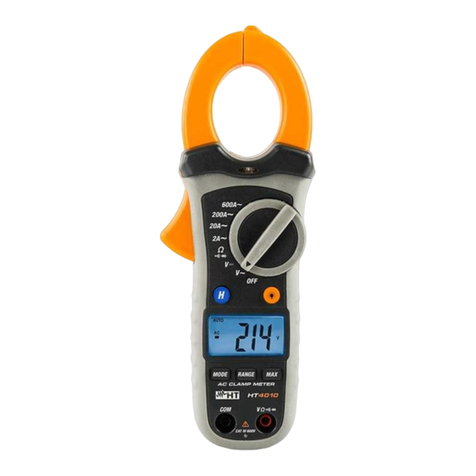
HT Instruments
HT Instruments HT4010 User manual
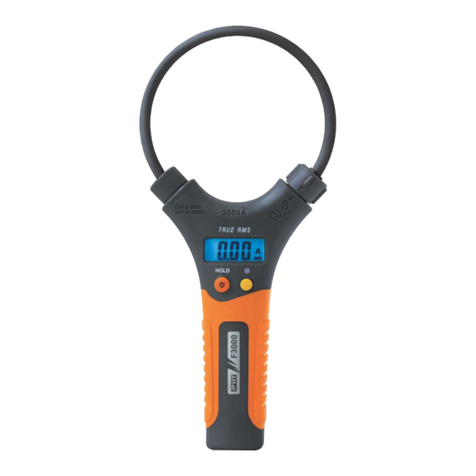
HT Instruments
HT Instruments F3000U User manual
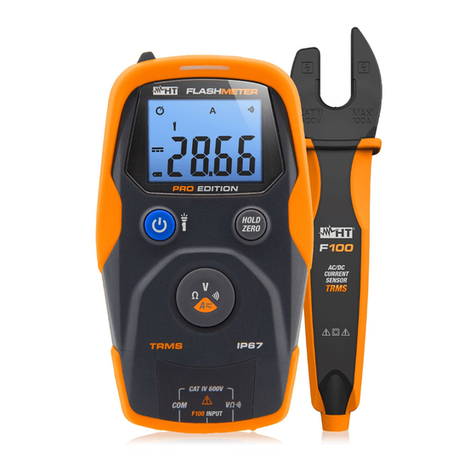
HT Instruments
HT Instruments FLASHMETER PRO User manual
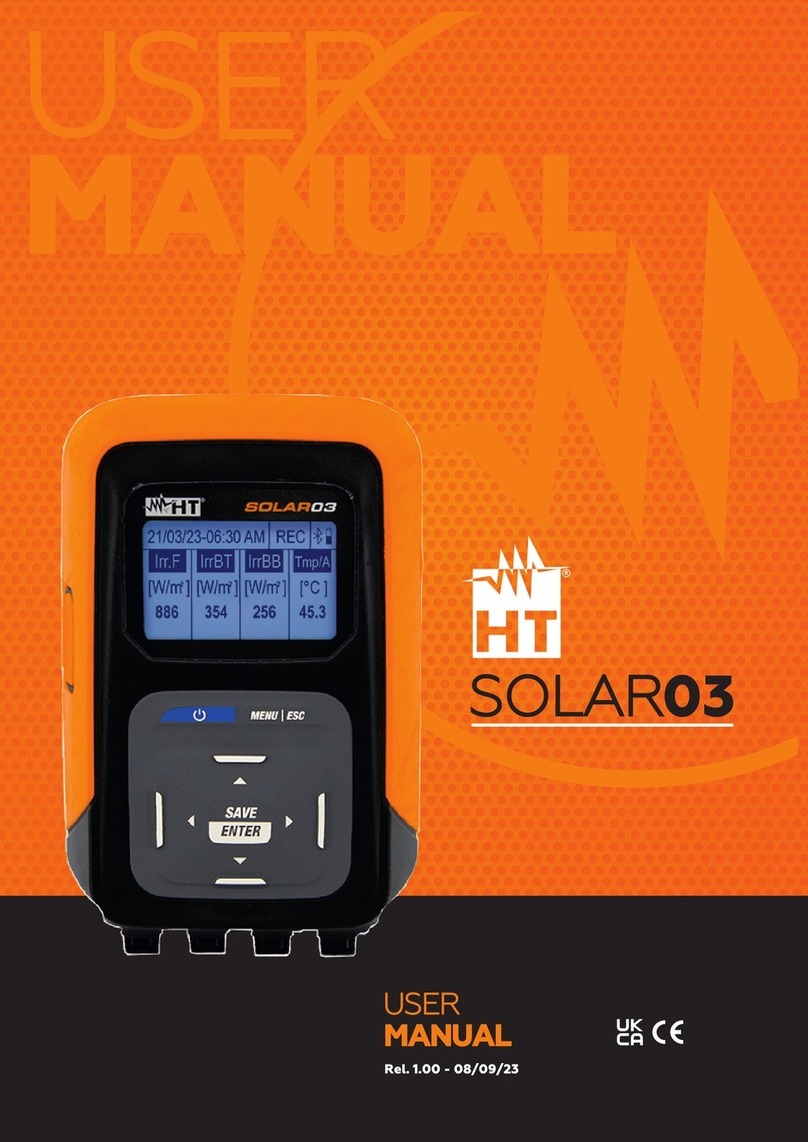
HT Instruments
HT Instruments SOLAR03 User manual
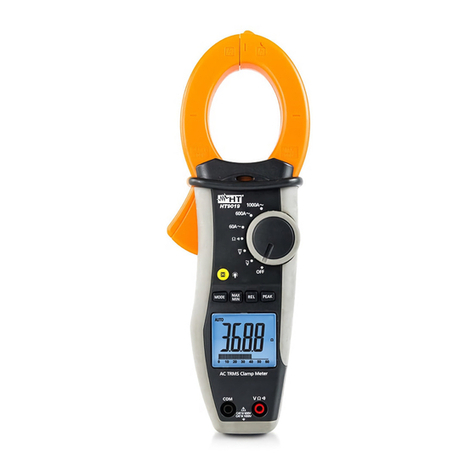
HT Instruments
HT Instruments HT9019 User manual
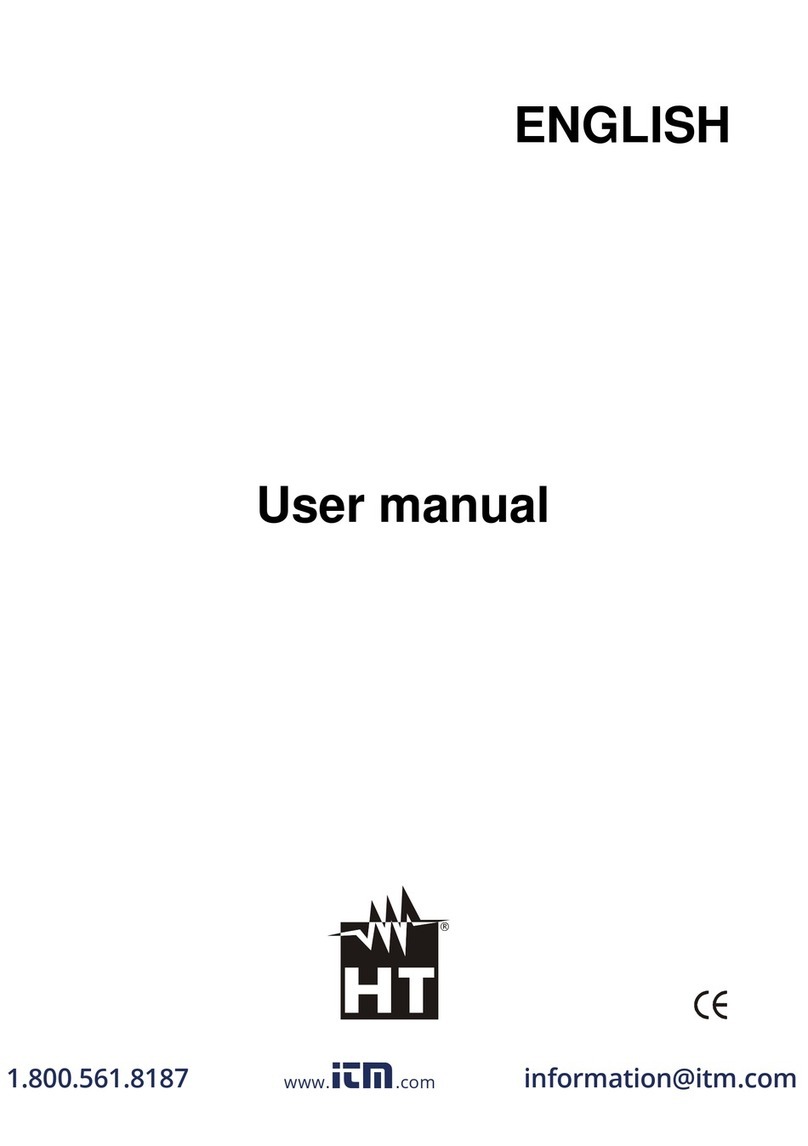
HT Instruments
HT Instruments HT4020 User manual
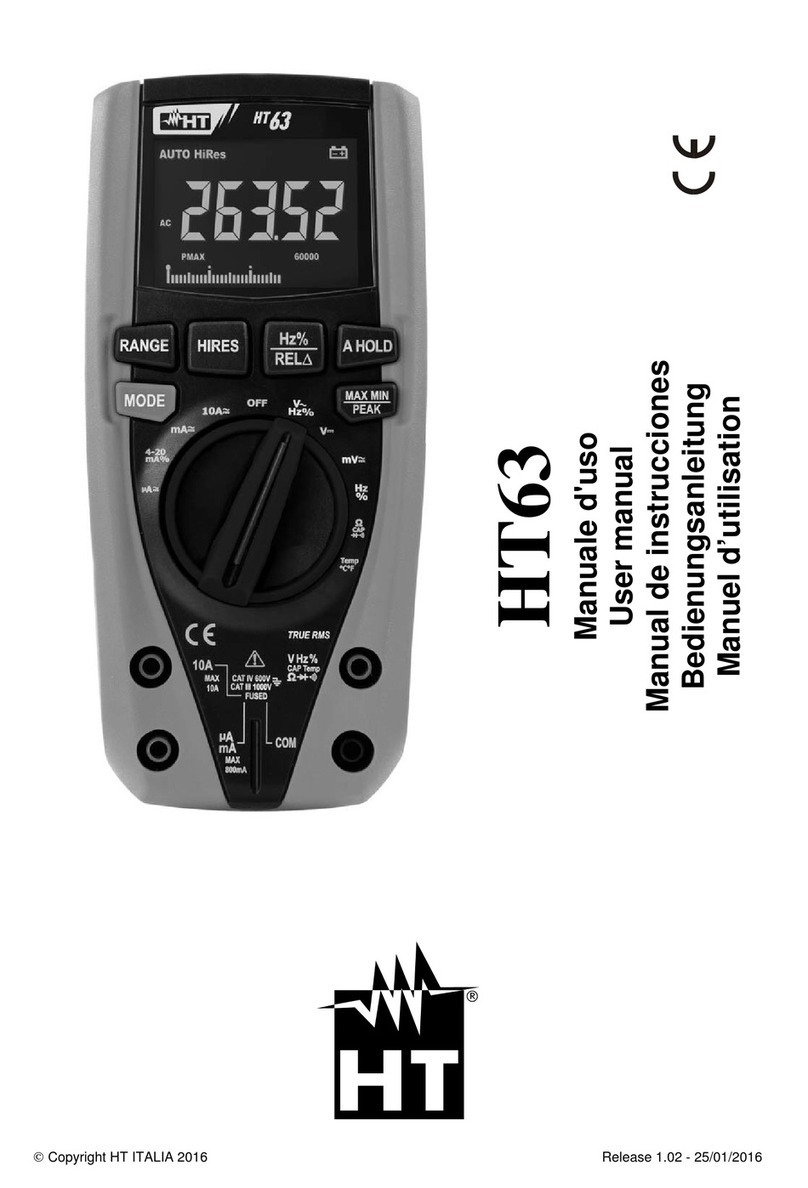
HT Instruments
HT Instruments HT63 User manual
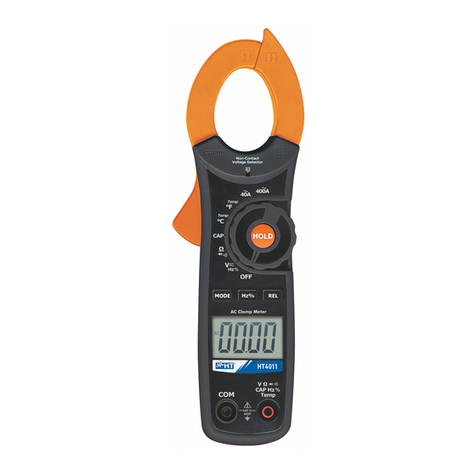
HT Instruments
HT Instruments HT4011 User manual
